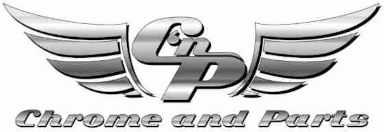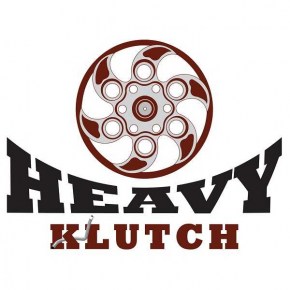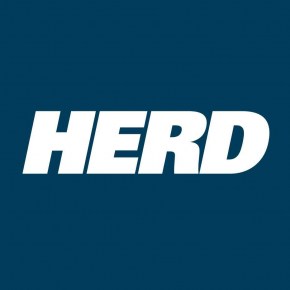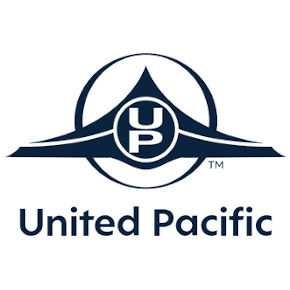Over the past decade the cost of trucking has been rising and it does not look like it will slow down anytime soon. In order to be profitable, one should manage these variations in operating costs. First and foremost, one must be aware of what these costs are, and then what solutions can help to minimize the impact they have on the bottom line. Especially when trucking companies are closing down abruptly at a rate never seen or heard before.
According to a recent study from the American Transportation Research Institute (ATRI) the average trucking cost per mile in the U.S. is $1.691. This includes driver, fuel, equipment, insurance, repair, and other truck operating costs. The average truck drives 89,804 miles per year, hence, a total cost of trucking operations in the U.S. averages $151,859 per truck. However, something to give thought is that out of the 89,804 miles an average of 20.7% of these miles are being reported as “dead-head” or non-revenue miles.
Naturally, it begs the question how does one go about this?
What are these costs?
We have listed them below with insight into each cost driver to better understand this, so one can tackle this head on.
Fuel
On average, a class 8 truck uses about 20,500 Gallons, which is equivalent to about to 70,000 USD in fuel per year, on a per mile basis, fuel costs $0.37 per mile. Fuel prices have fluctuated over the years due to a number of factors such as the Great Recession and the emergence of U.S. shale oil. According to a recent report from the American Transportation Research Institute, the marginal, per-mile costs of a truck, increased by 7.7 percent last year. A large portion of which can be attributed to a 17.7 percent increase in the price of fuel. That increase is likely here to stay as a new sulfur-free marine rule will inflate prices for at least another year. Refiners will pass increased production costs off to consumers while they shift to the new fuel formulas. The average fuel economy of the ATRI sample came in at 6.4 MPG, a slight increase from the previous year of 6.3 MPG. This is expected to continue to trend, with higher efficiency with the emergence of more fuel-efficient trucks. Fuel costs being a significant operating cost, it’s important to have processes and technology in place that optimizes your routes and conserves fuel.
Truck Cab, Trailer, and Equipment
The cost of trucks and trailers has steadily risen since 2013, coming in at $0.26 per mile, or 16% of total operating costs. This is not surprising, given the increased cost of equipment over the last decade (largely due to regulatory mandates) and safety issues (lane departure, collision avoidance, anti-rollover, automatic transmissions). Equipment-related decisions made by carriers have a direct impact on lease and purchase payments, repair and maintenance outlays, and tire costs. Truck and trailer payments are quasi-operational costs since many motor carriers purchase trucks and trailers in response to capacity constraints in strong economic periods; those payments continue whether the truck is operated or not, but are paid for with operating revenue. This was seen in 2018, where truck sales were at its peak, as business was good, many trucking companies over compensated with increasing their fleet. Also, the age, type, and turnover rates of a motor carrier’s equipment have both direct and indirect effects on several key cost centers for motor carriers.
Driver Salary
In terms of total operating costs, drivers are paid $0.557 per mile for wages and $0.172 per mile for benefits, resulting in 33% and 10% of operating costs, respectively. A growing driver shortage and increased regulations and traffic congestion have prompted driver wages to have continually increased over the years. It is reported that a shortage of 50,000 qualified drivers continued to plague the industry in 2016 and has the potential to increase to 174,000 by 2026. Especially with this constraint driver wages and benefits continue to be ranked as the biggest cost center for motor carriers. Carriers are having trouble attracting and retaining truckers, many of whom are opting for other equally well-paying blue-collar and localized delivery jobs. This driver shortage has caused carriers to have to increase driver wages and benefits in order to attract more drivers. This has driven up wages for the limited pool of remaining drivers, which is a cost that some small carriers cannot absorb. To dilute the pool further, the online retail giant Amazon is building its own in-house fleet of truck drivers. The e-commerce platform has recently begun creating its own branded tractors, which has led to speculation that the e-commerce giant will look to hire its own team of drivers rather than outsourcing the function to industry incumbents.
Repairs and Maintenance
Repair and maintenance (R&M) costs are another important component of a carrier’s equipment-related cost that have steadily increased almost continuously year after year. In fact, R&M costs per mile have increased by more than 60 percent to 16.7 cents per mile between 2008 and 2017. For instance, newer equipment models are more expensive to repair and maintain due to the growing technological sophistication of both power units and trailers. Many of the advanced features and technologies that were luxury add-ons just five or ten years ago are becoming standard components, or even mandated systems, of newer models. This falls in various lines in the R&M costs because the age of a truck, the vehicle configurations used, and technologies installed can all impact a carrier’s repair and maintenance costs. In addition, a number of variables such as the diesel technician shortage, intensive usage of truck-tractors, and fleet size continue to drive up R&M costs. However, from 2017 onwards the growth rate of these costs can be seen to drastically reduce. This is because the newer equipment tends to be of higher quality and brings on less trouble and repairs than before, also the fact that miles cumulatively done by trucks compared to previous years has reduced.
Insurance
Insurance premiums for long-haul trucks and trucking companies have increased dramatically in the past few years, doubling from an average between $6,000 and $7,000 in the beginning of the decade to between $12,000 and $14,000 today. Insurance premiums cost $0.225 per mile, making up 5% of the total cost breakdown. Commercial insurance is a very complex and volatile cost center for motor carriers of all sizes. Many internal and external factors impact a carrier’s insurance rates and costs – often independent of the carrier’s crash history and safety ratings. The increased premiums are largely a result of unfavorable carrier verdicts in truck accident litigation. These costs are again difficult for smaller operations to absorb and have made the cost of doing business unfeasible for companies with a reduced revenue stream. In almost all instances, carriers rationally and regularly assess the relationship between insurance costs, deductible levels and crash/liability risks, and engage in a tenuous balancing act between managing risk and cost.
Tires
Many factors such as petroleum prices and supply and demand for new trucks and trailers influence the price of tires. In terms of the overall trucking operation breakdown, tires constitute 2% with $0.038 per mile repair costs. Similar to M&R costs, the fewer miles a truck is driven, the longer the tires will last.
Permits, License and toll
Permits and licenses are prerequisite in trucking, so these costs can’t be shunned or reduced in any way. On average, they account for only 1% of operating costs, or $0.023 per mile. In regard to tolls, the cost can vary depending on the region of operation. On average the costing is about $0.027 per mile, or 2% of operating costs, the most expensive region is the Northeast, with the West being the cheapest.
Technology
The upkeep technologically enabled tractor trailers have further strained many carriers. As the final phase of the electronic logging devices (ELD) mandate is now in effect. It requires all trucks that were previously using an AORBD system to now be equipped with an ELD. While the mandate should prove to be beneficial to the industry in the long-term, getting all trucks in a carrier’s fleet technologically enabled has proven expensive, along with the maintenance of them.
Optimize operations to enjoy cost savings
Savings are not a one-time event. They accrue, year after year, and increase as businesses grow and continue to optimize. A snowballing of savings just running down to boost your bottom line, isn’t it a beautiful thought to have?
Route and Load optimization
It is about how to load your trailers, sequence your stops, minimize the miles you need to make deliveries, find the cheapest place to get fuel, and minimize out-of-route miles — all while meeting the transit time requirements.
In order to achieve route and load optimization an optimal fleet mix and route plan for the vehicles as well as factoring local constraints such as traffic, possible route restrictions are required along with intelligent clubbing of orders based on properties such as preferred delivery time, priority, location, and order specifications. In order to achieve this many prominent solutions are available in the market with control tower applications to manage operational exceptions and predictive alerts on delays, vehicle breakdowns, idle time, to improve efficiency of delivery and save the owner some dollars, every dollar saved is a dollar earned. This is intelligently done by reducing turnaround time by optimizing first-mile operations, navigating optimally across locations of warehouses/distributer centers, reducing sorting times at fulfillment centers and last-mile distribution centers.
Optimize Warehouse Partnerships
Partnerships between drivers and warehouse operators can be an essential part of controlling costs. Technologies like flat-screen displays at the dock door to show relevant data and gamification are an investment but also essential for improving efficiencies in the processes for loading and unloading freight shipments. Reducing detention fees, lowering dock door turnaround times and boosting employee engagement with drivers are all benefits associated with enhanced technology in the warehouse. Investment in this step of the freight process improves distribution, grants greater transparency and ultimately provides cost savings.
Telematics and Fleet Management Software
Airlines already use black box technology, a form of telematics, to analyze flight data in the event of a damaged or missing plane. The trucking industry can use telematics technology to allow fleet administrators to easily streamline communications, report progress in real time, track compliance with federal regulations and enhance security. These devices automatically record driving times and monitor engine hours, vehicle movement, miles driven and location information. With in-cab mobile devices, fleet managers can take advantage of engine-connected telematics solutions to improve asset visibility, driver safety and fuel efficiency.
Abrupt closing of truck companies
The industry that moves 72% of America's goods is suffering through a downturn so epic that some truckers are calling it a "bloodbath." This we believe is solely due to mismanagement and overcompensation for demand in 2018. In the first half of 2019, around 640 trucking companies went bankrupt, that's almost 4 times the amount of bankruptcies from the same period last year — 175.
As we dug deeper, we believe the following three key factors could be singled out as catalysts for this “bloodbath”
- Rates in the spot market, in which retailers and manufacturers buy trucking capacity as they need it rather than through a contract, sank by around 15% - 18% when compared year-over-year .
- Total miles driven increased from the previous year, but revenue per load, a key measure of yield in the trucking industry fell by 18.4% from 2018 and by 8.5% from the first quarter.
- Rising Costs in Insurance, Driver Salary as mentioned above have accelerated the impact of these fundamental issues.
Here are some household names in trucking that have shut doors and have ceased to operate:
- Williams Trucking
The Alabama-based Williams Trucking abruptly shut down on May 1, telling its 48 truck drivers to finish up deliveries, bring their trucks back to the headquarters, and go home.
- Ready trucking
Ellenwood, Georgia-based trucking company Ready Trucking closed permanently on Aug. 30. It was founded in 1968 and moved general freight, dry commodities, beverages, and paper products.
- ALA Trucking
Effective June 26, the Anderson, Indiana-based trucking company ALA Trucking Inc. shut down after 31 years in operation. Along with 15 other employees, 41 truckers with ALA lost their jobs.
- Terrill Transportation
A Bay Area-based trucking company called Terrill Transportation shuttered on July 30 2019.Terrill Transportation was in business for around 25 years. It employed 36 truck drivers and moved dry goods, beverages, and refrigerated food, according to the Federal Motor Carrier Safety Administration database.
- HVH Transportation
HVH Transportation shuttered on Aug. 28 2019, leaving some 324 truck drivers out of work. The company was founded in 1977 and was based in Denver, Colorado.
- Cold Carriers
On July 12, LME posted on its website that it was no longer accepting loads and was shutting down immediately. The company employed more than 400 truck drivers. Based in New Brighton, Minnesota, LME was a less-than-truckload trucking company in the US.
- Stevens Tanker Division
Stevens Tanker Division notified employees in September that it will shut down operations on or before October 15, 2019. Since December 2018, the oil and gas industry has seen a steep decline in drilling and completions activity. The general decline in the industry has taken a terrible toll on Stevens Tanker Division. This will be a permanent closure of all Stevens Tanker Division business in all locations and in all divisions. The final decision to close was the result of unforeseen business developments over which Stevens Tanker Division had no control, including a 65% reduction in sand orders starting on September 20, 2019 and continual loss of production water due to customers' increased use of piping.
- Falcon Transport
More than 550 truck drivers at the Youngstown, Ohio-based Falcon Transport learned in late April that their employer was going under — effectively immediately. CounterPoint Capital Partners, a Los Angeles-based investment firm, bought the 116-year-old company in 2017.
- Carney Trucking Company
Carney Trucking Company announced on July 31 that its operation was shutting down. It is an Alabama-based trucking company that was founded in 1983 - the cost of insurance forced the company to close its doors
- New England Motor Freight
On February 12, New England Motor Freight "stunned" the rest of the industry when it announced it was filing for bankruptcy and shutting down operations. NEMF generated $402 million in revenue in 2017, ranking it as the 19th-largest less-than-truckload trucking company in the US. It employed more than 1,300 truck drivers. In a recent interview Thomas Connery, the president and chief operating officer of NEMF, admitted that the high labor costs and other costs of business in the trucking industry were the leading reasons for the company's bankruptcy filing. "Excessive regulation, significant toll increases, and the high cost of insurance were also among contributing factors," Connery said.
- Celadon Group
On December 8, Indianapolis-based Celadon Group filed for bankruptcy. The publicly traded company grossed $1 billion as recently as 2015. "We have diligently explored all possible options to restructure Celadon and keep business operations ongoing. However, a number of legacy and market headwinds made this impossible to achieve," CEO Paul Svindland said in a statement. The abrupt shuttering left nearly 4,000 employees jobless. On December 5, the Securities and Exchange Commission charged two former Celadon executives following a multiyear accounting scandal. The news plunged Celadon's stock to $0.41 a share the day after — a considerable tumble from the more than $20 a share that the stock was worth in 2015 before the accounting scandal became public knowledge.
- West Tenn. Express
West Tenn. Express is out of service and no longer operating, according to the FMCSA database. The trucking company was based in Jackson, Tenn. and employed 37 truck drivers.
- Starlite Trucking
Starlite Trucking, which was in business for 40 years, announced on July 12 that the company was closing down. The company was based in Ceres, California — about 100 miles southeast of San Francisco — and mostly hauled livestock feed, nuts, and other products for the agricultural region. CEO Colby Bell said in a statement on Facebook that the rising compliance costs of California regulations gutted the company — particularly as rates have stagnated.
Well, What Now?
Even though, 2018 was a record revenue year for the trucking industry where revenues in 2018 topped $796.7 billion, an increase of roughly 14% over the $700.1 billion the previous year the 2019 landscape was entirely different. In 2019 almost 800 trucking companies failed — more than double the rate of 2018. Why did 2019 see so many trucking companies closing, despite the booming U.S. economy? It’s because of over-expansion, high costs, and reduced prices.
Flush with cash from 2018, managements did what some other industries have been guilty of doing in booming years — they began to expand aggressively. Capacity growth exploded and spending on drivers’ pay surged. Among the things they didn’t anticipate in 2019 were escalating insurance costs and oversupply, which drove rates down at the fastest pace since 2016. The U.S. trade war with China didn’t help either.
One could argue that the market will correct itself and the trucking industry should take a page from the airline industry’s playbook. Make fundamental changes. Go for more fuel efficiency. Find new revenue sources. Be more disciplined when it comes to growth.
On the other hand, there have been some signs of a turnaround: Retail sales are on the up and up, and big names like UPS and J.B. Hunt announced positive numbers in recent months. However, until trucking as an industry picks up and gets back on its feet, more trucking companies are likely to close their doors, forever.









